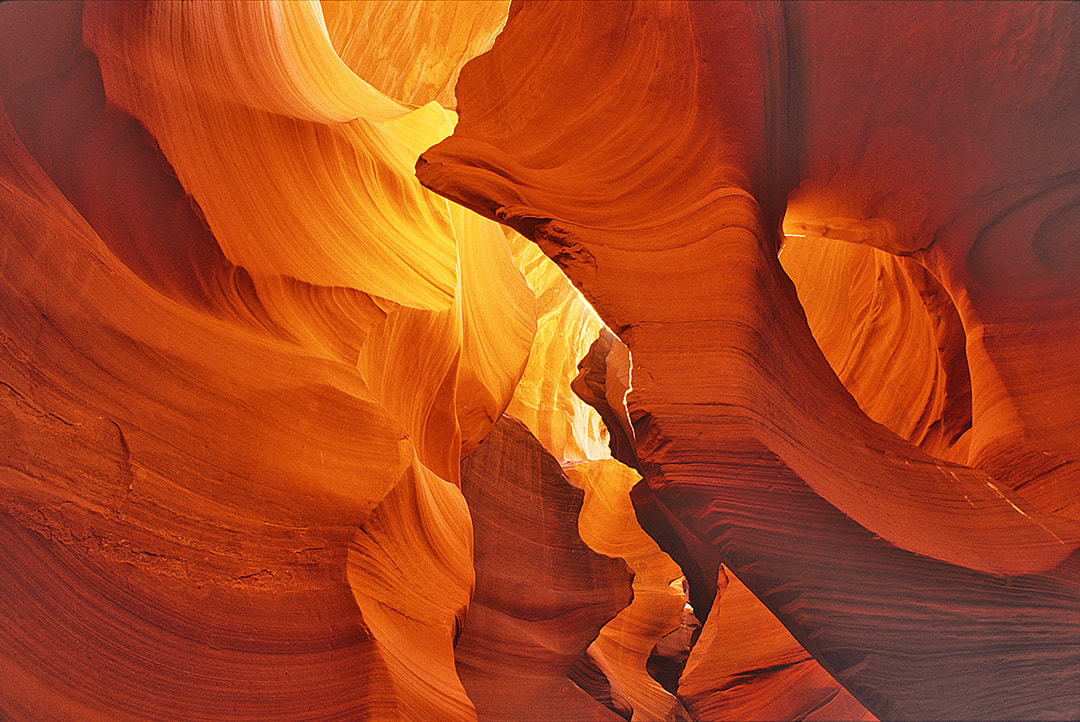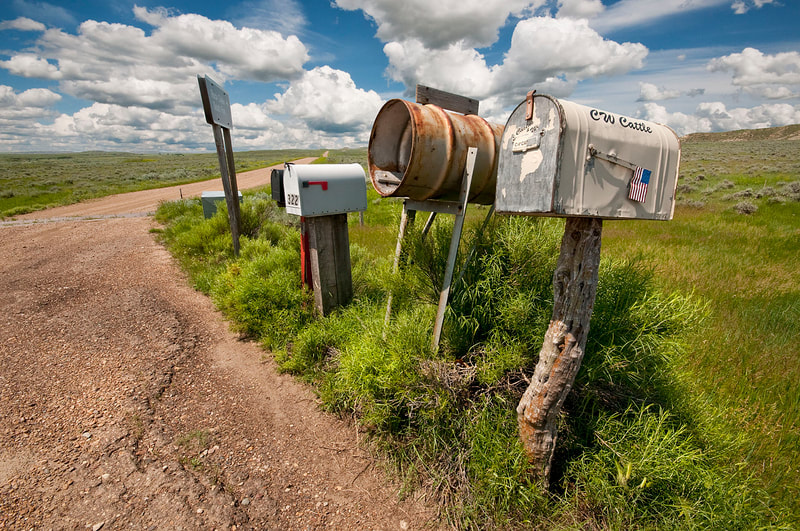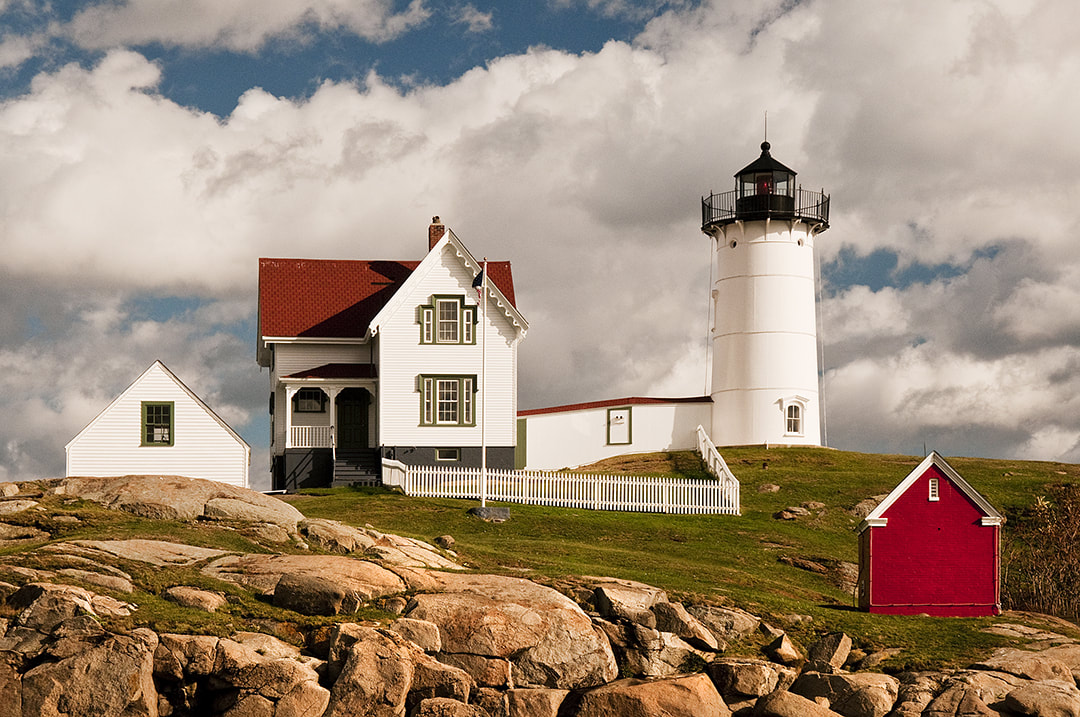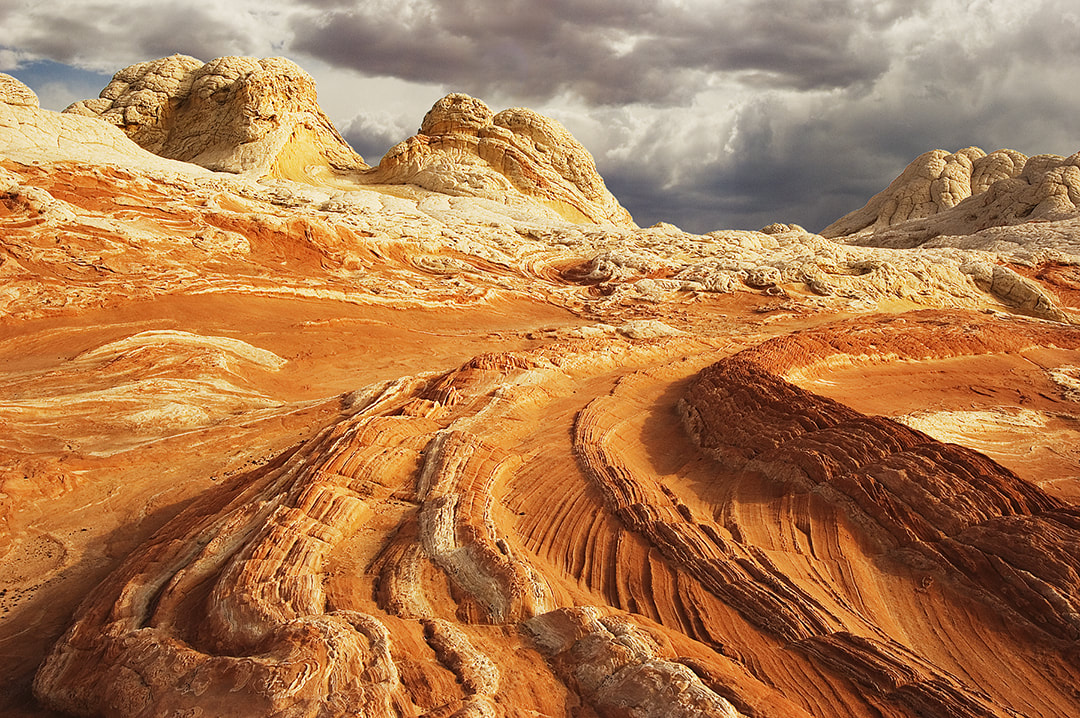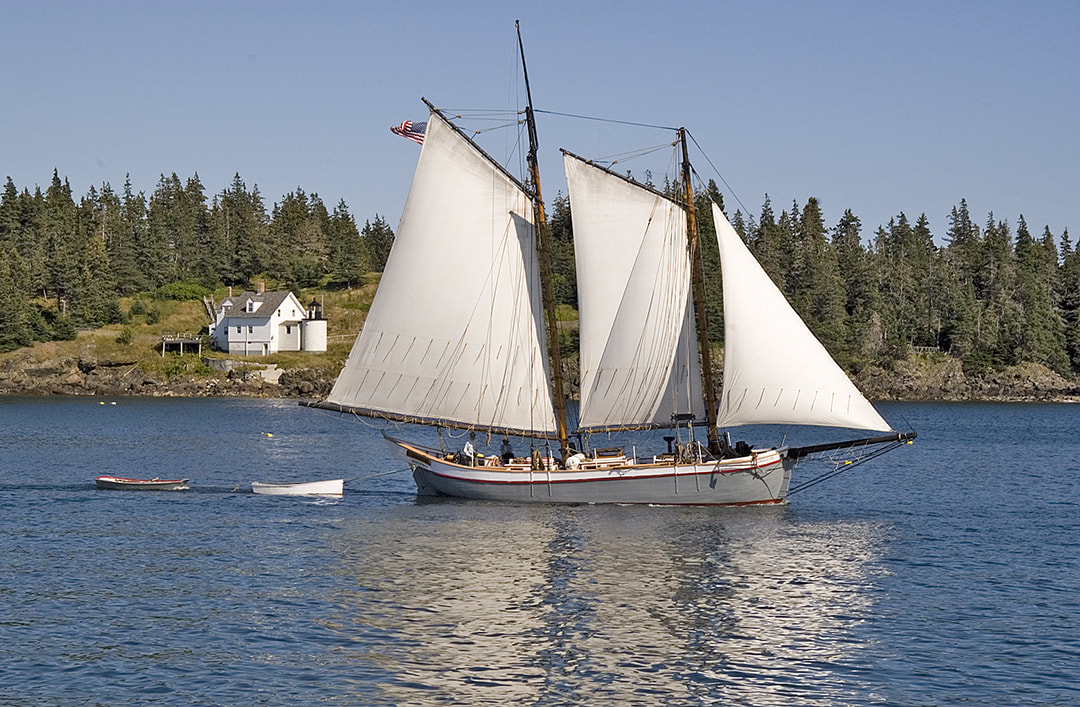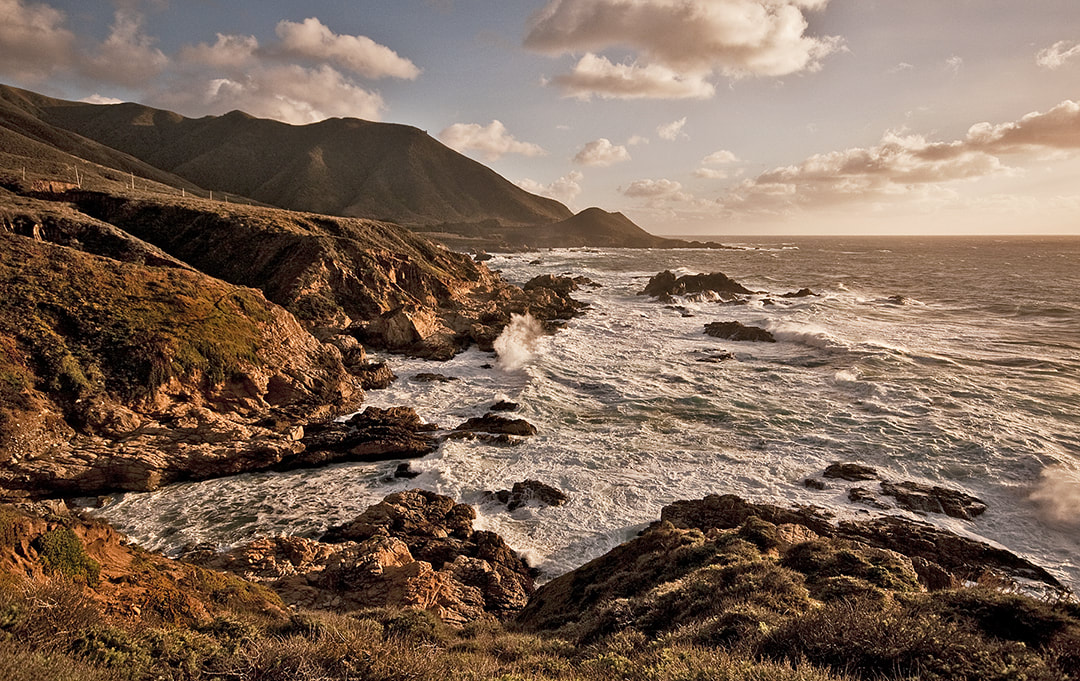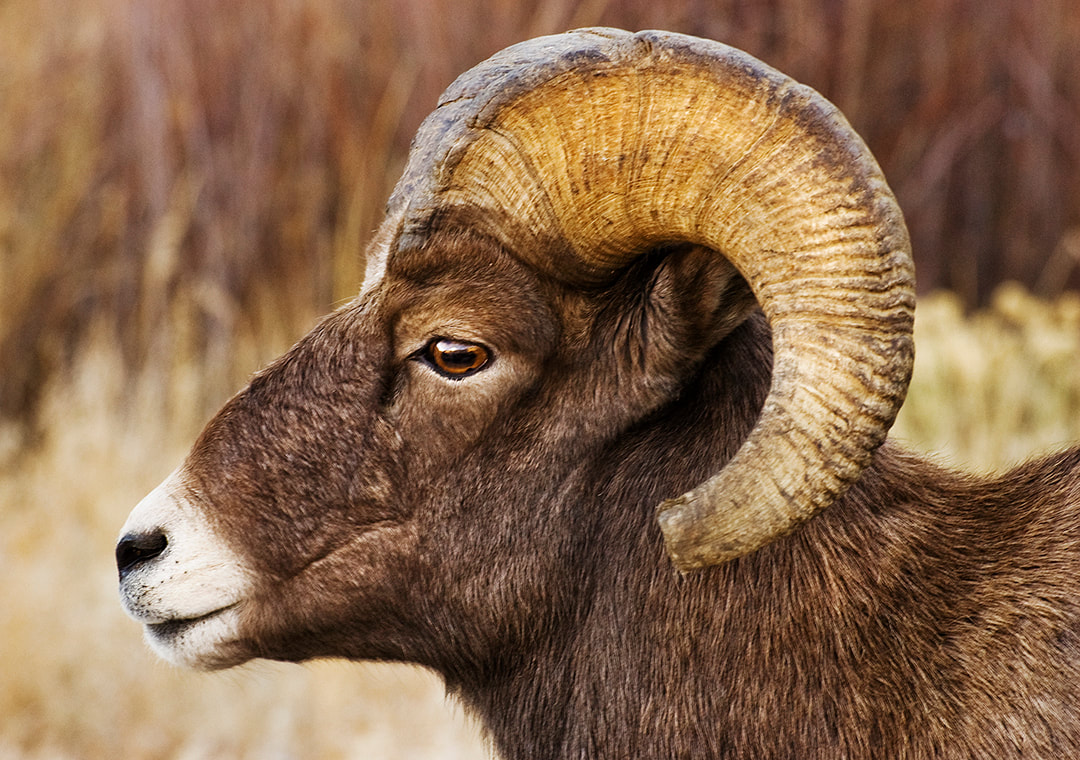|
Last year I returned to the deserts of the Southwest searching for more hidden desert canyons – the “slot canyons” carved ages ago in wetter times by streams flowing toward the Colorado River. By squeezing through narrow openings and lowering myself on a rope, I reached an underground chamber, a wide spot where I spread the legs of my tripod and stepped back to frame fantasies of deeply sculpted curves and patterns of stripes across the red sandstone walls. The walls of this grotto were illuminated by glowing light striking the rim of the narrow opening, hundreds of feet above me.
These deep slot canyons can be found on the deserts of northern Arizona and southern Utah. They can be so narrow in places that visitors have to turn sideways to walk through them. Buckskin Gulch, in the Paria Wilderness Area, is almost 500 feet deep and about nine miles long. Two of the most beautiful slot canyons are located near the town of Page, Arizona. My Photograph America Newsletters, #007 - Hidden Desert Slot Canyons, Utah and #042 - More Hidden Desert Canyons, Utah / Arizona, are filled with locations, directions and information on camera gear, lenses and safety tips: avoid the slot canyons during monsoon season when flash floods can wash away hikers. This newsletter is about a journey through a remote part of northern Montana along the Canadian border. With detailed directions, it documents the Hi-Line country and the weathered remains of old farms, homes, barns, and rusting grain elevators against spectacular vistas, plus old steam locomotives, a white pelican refuge, and rolling, wheat-covered hills. Detailed directions, along mostly unpaved roads, include GPS coordinates.
If you enjoy the challenge of creating images with dramatic landscapes of America, Montana’s Hi-Line Country, Issue # 119, may be the place for you and your camera. The Hi-Line Country is just east of Glacier National Park for a little variety. Many of the lighthouses on the coast of Maine sit offshore, at the eastern tip of remote islands. A dramatic beauty can be seen in these structures and their rugged environments. For this newsletter, I selected lighthouses that are accessible by car or that can be photographed with a telephoto lens from the mainland. There are detailed directions to 18 of the most photogenic spots from Kittery to Lubec–every one is unique. Included are tips on the best time of day to arrive.
For a real adventure, combine these lighthouses with an autumn color visit in mid-October and include a visit to an offshore island. Issue #116 - Lighthouses on the Coast of Maine wraps up with a short list of my favorite five Maine lighthouses. In the Vermilion Cliffs National Monument on the northern edge of Arizona is a formation called “White Pocket.” It is a half-mile long, north to south, and a quarter-mile wide, east to west and three miles south of the Utah border.
This spot is a remote location for which photographers are always searching. A hard, thin sandstone crust covers a core of red Navajo sandstone. The light-colored crust is almost completely covered with patterns of cracks dividing the surface into polygons, each slightly raised in the center. In some places, the white crust has been torn open to reveal the underlying red sandstone. Huge mounds across the rolling terrain rise from the desert floor in twisted and cross-hatched patterns. You’ll need a guide to find this bizarre landscape and a tent and sleeping bag plus at least two days to explore and photograph the treasures in this part of the desert. You'll find the information you need in issue #105 - Arizona's White Pocket. Countless islands are scattered along the coast of Maine. A few are easy to reach. Most have no ferry service. Some are just rocks, some are private property, and others are accessible to visitors with their own boats. Only about fifteen islands have ferry service along the entire coastline of Maine. These remote bits of land, stranded far from the mainland, draw photographers with a promise of unusual landscapes. Protected from outsiders, islands are special places with their own private worlds.
Pack your camera gear and head off to capture new images on islands off the coast of Maine. After research, some ferryboat rides, and miles of hiking, I discovered some remote places you’ll want to visit and photograph. You can leave your car behind and ride a ferry out into the Atlantic to find new compositions for your camera. Discover scenic villages, isolated beaches, and authentic fishing harbors filled with lobster boats with the help of issue #096 - Islands Off the Coast of Maine. From Oregon to Mexico, the California Coast is World-famous for its scenic beauty. In the north are miles of rugged cliffs too steep for a road which follows an inland route through forests of ancient redwoods. Farther south, Highway #1 winds in and out of deep coves and “dog-hole” ports where logs were loaded onto sailing ships by sliding them down long cables.
Halfway down the coast is Point Reyes where elephant seals raise their pups on a beach near one of the most spectacular lighthouses on the Pacific Coast. You can hike across the Golden Gate Bridge and out to Land’s End for panoramic views in every direction. Stay on the coast road, Highway #1, to Monterey and Carmel where you must hike the trails around Point Lobos to photograph forests of wind-blown cypress. Farther south is Big Sur and more trails to remote beaches and waterfalls. To find the best locations for photography along the Southern California Coast you’ll need my Photograph America Newsletter on California’s Southern Coast #121. A great location for wildlife photography in early November is near Cody, Wyoming. That’s when the bighorn sheep come down from deep snows in the Absaroka Mountains to graze in the Wapiti Valley. Unless you want to drive snow-covered roads, you’ll need to fly into Cody and rent a car at the airport, preferably a 4x4. There is a good selection of motels, hotels, and restaurants in Cody.
To the west of Cody, along the Shoshone River, you’ll see herds of ewes grazing with their lambs. Off in the distance, you’ll spot the rams, watching for predators. Both ewes and rams have large horns. Lambs are born with short stubs. Lambs are born in late spring, high in the mountains. November is breeding season. You will do most of your shooting here with a 300mm lens. A tripod is very useful for the long waits while the herds move slowly in your direction. You’ll find a map and a lot more info in my Photograph America Newsletter on Wyoming Bighorn in Winter #108. |
BlogNotes and images from Bob Hitchman. Archives
July 2024
|

